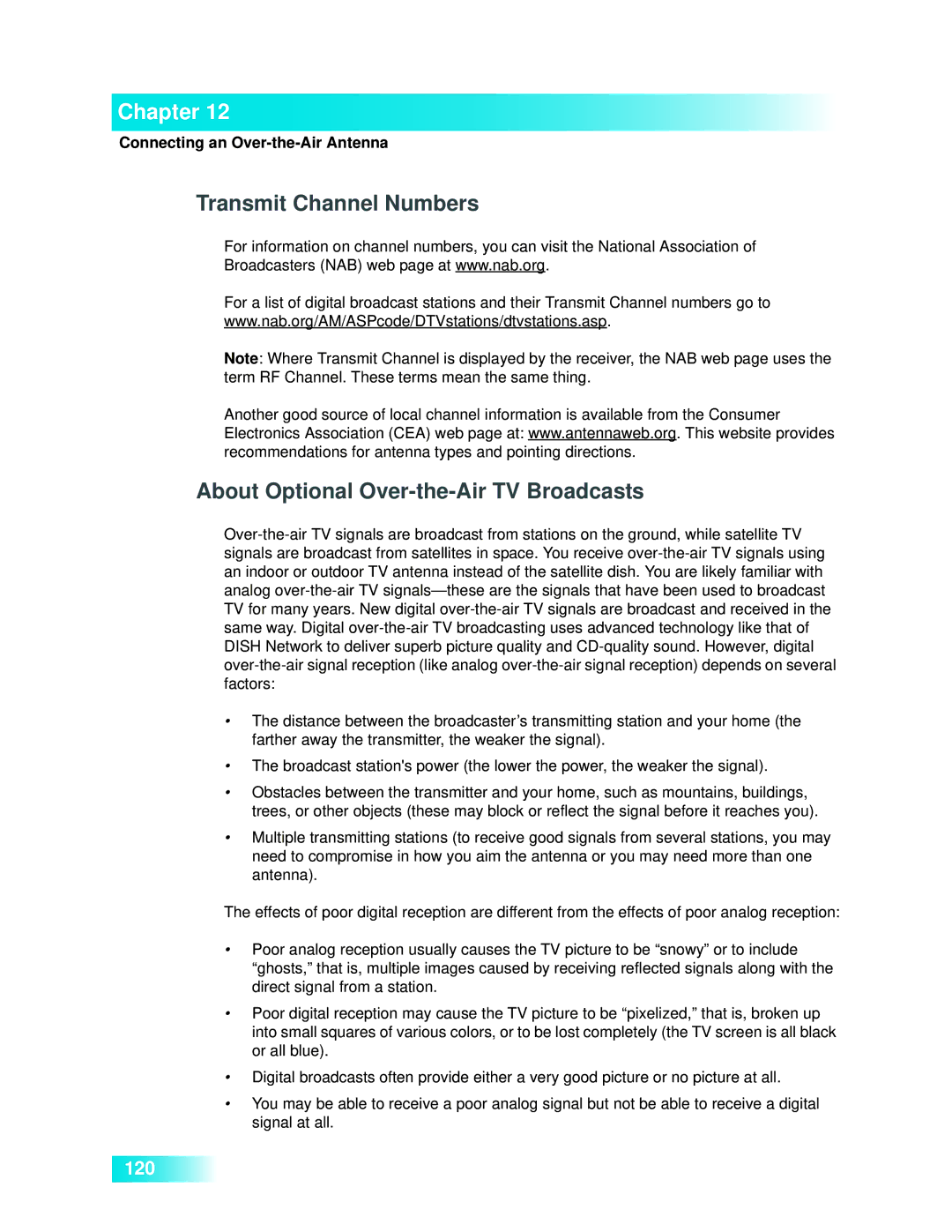
Chapter 12
Connecting an Over-the-Air Antenna
Transmit Channel Numbers
For information on channel numbers, you can visit the National Association of
Broadcasters (NAB) web page at www.nab.org.
For a list of digital broadcast stations and their Transmit Channel numbers go to www.nab.org/AM/ASPcode/DTVstations/dtvstations.asp.
Note: Where Transmit Channel is displayed by the receiver, the NAB web page uses the term RF Channel. These terms mean the same thing.
Another good source of local channel information is available from the Consumer Electronics Association (CEA) web page at: www.antennaweb.org. This website provides recommendations for antenna types and pointing directions.
About Optional Over-the-Air TV Broadcasts
•The distance between the broadcaster’s transmitting station and your home (the farther away the transmitter, the weaker the signal).
•The broadcast station's power (the lower the power, the weaker the signal).
•Obstacles between the transmitter and your home, such as mountains, buildings, trees, or other objects (these may block or reflect the signal before it reaches you).
•Multiple transmitting stations (to receive good signals from several stations, you may need to compromise in how you aim the antenna or you may need more than one antenna).
The effects of poor digital reception are different from the effects of poor analog reception:
•Poor analog reception usually causes the TV picture to be “snowy” or to include “ghosts,” that is, multiple images caused by receiving reflected signals along with the direct signal from a station.
•Poor digital reception may cause the TV picture to be “pixelized,” that is, broken up into small squares of various colors, or to be lost completely (the TV screen is all black or all blue).
•Digital broadcasts often provide either a very good picture or no picture at all.
•You may be able to receive a poor analog signal but not be able to receive a digital signal at all.
120
